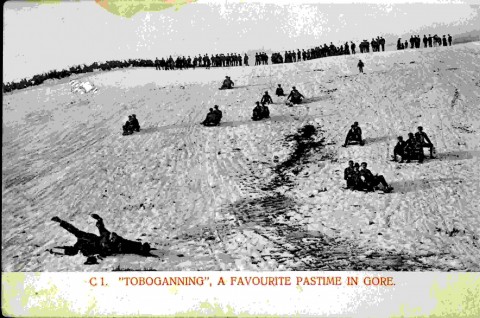Blog
June 2016
1996 & the 'big freeze'
Wednesday, 29th June 2016

It was the end of June, 20 years ago, when southern New Zealand suffered a polar blast that left the district covered in thick snow. This was followed by 14 days of severe frosts. NIWA tells us that the lowest temperature was -10.5 and unofficial records in the district suggest -15. On four days, the temperature never even reached zero.
It was the school holidays and children enjoyed making snowy creations and throwing plenty of snowballs. Gore looked a picture with icicles hanging from the guttering of houses, and the trees looking like a winter wonderland. But there was lots of damage. There were burst pipes in houses and schools. St Mary’s, Te Tipua and Gore High School students all had an extended holiday due to damage to school pipes. The icy conditions meant a number of car accidents and broken bones as vehicles and people alike often slid out of control no matter how careful they were. One of the longest lasting consequences of the ‘big freeze’ was the damage to trees, hedges and a variety of plants.
So, had the district ever seen this before? Yes, in 1889 and 1903, when it was so cold that the Mataura and Waikaka rivers froze. People took their chances ice skating and tobogganing. Check out this article from the 18 July 1903 edition of the Mataura Ensign.
Here is some data provided by NIWA about the 1996 freeze.
| Date | Minimum temperature (C) | Maximum temperature (C) |
| 1 July 1996 | -0.2 | 2.4 |
| 2 July 1996 | -5.4 | 1.2 |
| 3 July 1996 | -10.5 | -2.7 |
| 4 July 1996 | -10.5 | -1.0 |
| 5 July 1996 | -9.6 | 1 |
| 6 July 1996 | -8.5 | -0.9 |
| 7 July 1996 | -9.8 | -1.0 |
| 8 July 1996 | -8.6 | 2.2 |
| 9 July 1996 | -9.0 | 1.2 |
| 10 July 1996 | -6.7 | 3.2 |
| 11 July 1996 | -0.9 | 3.8 |
| 12 July 1996 | -2.9 | 4.4 |
| 13 July 1996 | -4.0 | 0.9 |
| 14 July 1996 | -4.0 | 6.1 |
| 15 July 1996 | 0.5 | 5.4 |
West Gore School
Friday, 24th June 2016

Artwork from junior students of West Gore School on their discoveries at the Gore Historical Museum
The junior students of West Gore School have been focusing on what the Gore District looked like in the past. As part of their learning they visited the Gore Historical Museum and found many things that looked different such as washing machines, cameras and clothing. They also learnt how Gore first had the name ‘Long Ford’ and saw photos of how the town has developed.
Stephanie shared the story of 1913 flood that caused much destruction in the district and how a young Forrest Stephenson was saved by a circus horse rider.
Your school can learn more about the 1913 flood or the history of the district through Project Tūrangawaewae – Where We Live or by contacting the Gore Historical Museum.





